LIFE IN THE
FAST LANE - THE RIVIERA
Pre-Cruise Writeup
Story written by Rick Archer
/
June 2009
The French Riviera is a
legendary stretch of French coastline that is home to some of the
wealthiest people in the world. The French call it La Cote
D'Azur - the Blue Coast.
Thanks to the combination of sun-kissed beaches, rugged French Alps,
and the startling blue Mediterranean Sea, this area is incredibly
beautiful. The area also enjoys a balmy climate - at least 300
sunny days a year is the norm.
The French Riviera has proximity to the major countries of Europe -
France, Spain, Italy, Germany and Switzerland. As a result,
this is the ideal place for the affluent to live or to at least own
an expensive trophy vacation home. The Riviera is the home of
the Super Rich.
|
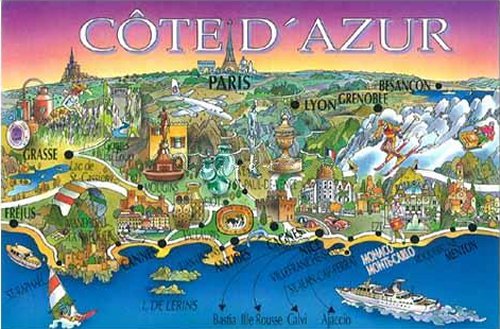 |
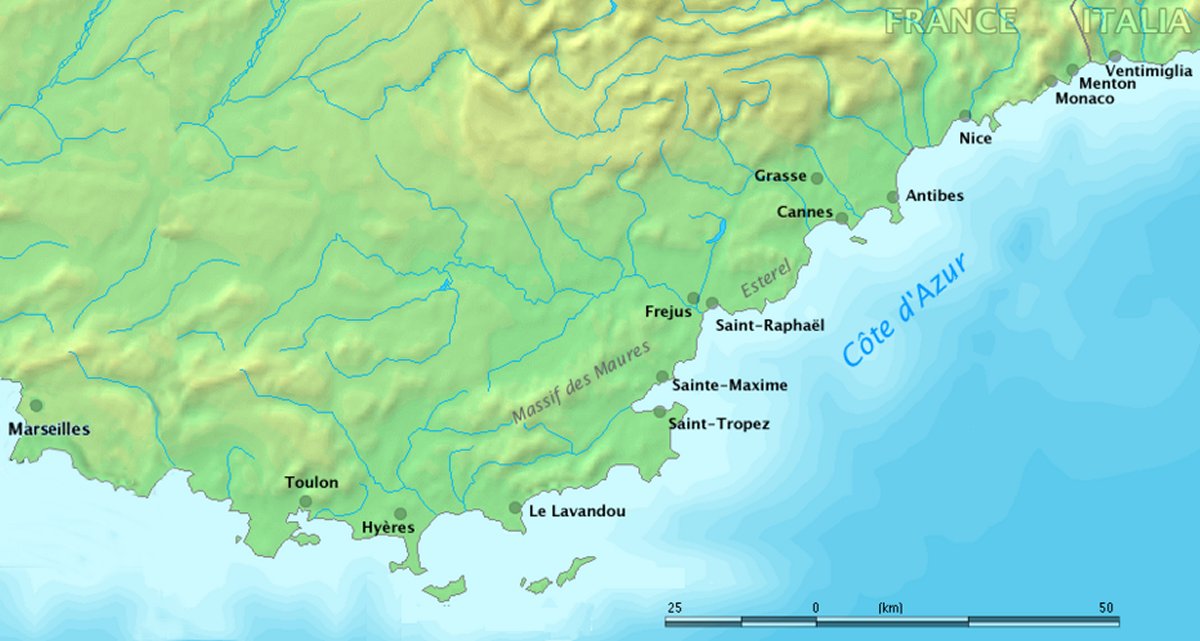 |
START
AND END OF THE RIVIERA
There is some argument as to where the
"true" French Riviera ends. Everyone seems to agree
the French Riviera begins at
Menton, a small town situated right on the
French-Italian border. However, where the Riviera ends is a
source of contention.
The very first source, Wikipedia, suggested
the French Riviera extends from Menton to
Hyeres, the southernmost part of France. This
would mean the Riviera is 84 miles long or 135 kilometers if
you prefer that irritating metric system.
On the other hand, if you prefer to believe the real estate
snobs, the Riviera ends at Cannes, a distance
of only 30 miles from Menton. Including Monaco,
this is definitely the wealthiest stretch of the world's
most valuable coastline.
A third
source
said the Riviera ends at the glamorous Saint-Tropez.
I spent two hours looking for the definitive boundaries of
the Riviera. After scrolling through eighteen pages of
Google listings, I stumbled across a book by Ted Jones.
Mr. Jones called Hyeres the Gateway to
the Riviera. Aha! I had to smile.
The very first entry on Google - Wikipedia - had listed
Hyeres as one of boundaries. Gee, I could have
saved myself two hours if I had just stopped there.
There has to be a lesson in that.
|
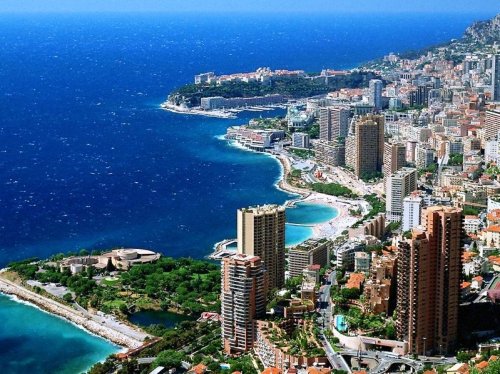
Monte Carlo in the famous country of Monaco |
I
MAKE A PREDICTION -
GET READY TO SEE THE RIVIERA!
On our cruise to
Alaska back in 2005, our cruise ship hugged the incredible
coastline of Alaska for the entire trip. I was so
mesmerized by the beauty of this totally unspoiled
wilderness that I spent hours just staring in awe at the
panorama of mountains and forests. It was so exciting!
I could never get tired of looking at that.
The same thing happened in Hawaii 2008. On our
final day, our cruise ship sailed right along the
spectacular Napoli coast. We were treated to a
close-up view of this incredible mountain splendor on the
island of Kauai. Very impressive.
As I study our itinerary, not only are we headed to
Nice, the largest city on the French Riviera, but we are
going to Marseilles as well. The shortest route
from Nice to Marseilles is right along the Riviera.
I could be wrong, but it makes complete sense that our
cruise is going to hug the entire fabulous Riviera
coastline.
I expect we will be treated to a marvelous two-hour
spectacle of some of the most beautiful and famous postcard
scenery in all of Europe. Don't forget to bring your
binoculars!
|
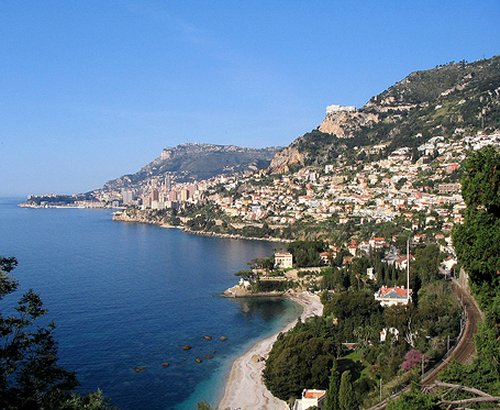 |
|
THE FRENCH RIVIERA - A
LITERARY GUIDE
By Ted Jones
(Rick
Archer's Note: In 2004, Mr. Ted Jones, a
resident of Villefranche, published a neat book about the
Riviera. He chronicled the personal stories of the
many literary giants who have fallen in love with this area.
It was Mr. Jones' theory that these writers played a major
part in creating the enduring legend of the Riviera. I have
reprinted the Introduction to his book since it not only
gives a keen insight into the Riviera mythology, but it is
fun to watch him indulge in such delightful name-dropping.)
|
"I wish to
God I had died in Hyeres." Robert Louis
Stevenson
The Gateway is
the old Roman port of
Hyeres, the Riviera's southernmost town.
Until the railway began to inch its way along the coast,
Hyeres was the only convenient option for northern
travelers. Its literary ghosts include the Russians Tolstoi
and Turgenev, Americans Henry James and Edith Wharton, and
Britons Rudyard Kipling and Robert Louis Stevenson.
Hyeres is the hub of a ring of coastal towns. These
include resorts like Bandol and
Sanary-sur-Mer, with their memories of Brecht, the
Lawrences and Huxley, and St Tropez, which
became the haunt of French writers like Sartre, Francoise
Sagan, and Colette.
Next is trendy
Cannes, at whose film festival stars and writers
have romped for over 60 years. Cannes is the city that
Kipling called a 'music hall revue' and Wodehouse 'a loathly
hole', where novelist Arnold Bennett wrote his sequel to
The Card - and entertained a young Rupert Brooke to
tea - and where Guy de Maupassant cut his own throat.
At the eastern
end of the Bay of Cannes, Antibes stretches
out into the Mediterranean like a basking dolphin, at its
nose the famous Eden Roc Hotel - host to the fabulously
rich.
Antibes is rich
in literary links. Here Jules Verne moored his yacht
and wrote his scenario for
Around the World in 80 Days. Scott
Fitzgerald wrote Tender is the Night on its
'bright tan prayer-rug of a beach', and Graham Greene spent
his last 24 years in a modest one-bedroom apartment, where
he wrote his last seven novels.
Nice,
the capital of the Cote d'Azur, is a treasure house of
literary memories. Here Hans Christian Anderson and German
philosopher Nietzsche used to winter, Oscar Wilde
recuperated after his release from jail for homosexuality,
and travel writer Bruce Chatwin died from AIDS.
Scores of
writers have strolled the sweeping palm-fringed crescent of
Nice's Promenade des Anglais, from Nabokov to James Joyce
Louisa May Alcott set parts of Little Women here, HG Wells,
Hemingway, and Scott Fitzgerald cavorted in its posh
Negresco Hotel, and on its sky-blue chairs, a young American
poet, Sylvia Plath, wrote a euphoric postcard to her mother.
Here the Russian playwright Chekhov watched Queen Victoria
drive by, and the dancer Isadora Duncan was strangled in a
bizarre accident with her own scarf.
Around the bay
of Villefranche, the
Cap Ferrat dangles like an earring into the
Mediterranean. Around its coast, the manicured lawns
of sumptuous villas - many of which belonged to King Leopold
II of Belgium - roll down to the water's edge.
One of these
villas, the Villa Mauresque, originally built in the Moorish
style to house King Leopold's personal priest, was bought in
1926 by the English novelist W. Somerset Maugham, who
lived there until his death almost 40 years later. The
villa was a writers' Mecca, its pampered pilgrims including
the leading artists, musicians and writers of the day.
A
'mini-Manhattan' is what Anthony Burgess, author of
Clockwork Orange, called
Monaco. Ever since the granting of the
gambling franchise of 1863, writers - and their characters
ranging from AA Milne's Winnie the Pooh to Ian
Fleming's 007 - have contributed to the Casino's coffers.
Dorothy Parker and Harpo Marx left their offerings on its
green baize tables (but his tetchy namesake Karl Marx called
the Casino's clients 'lunatics').
Sandwiched
between Monaco and the Italian border are Cap Martin
and the city of
Menton. At the peak of the Cap, in the Hotel
Ideal-Sejour, the Irish poet and playwright William Butler
Yeats spent the last flagging months of his life in 1939.
He wanted his remains to be buried in his beloved Sligo back
home, but a war intervened. It was nine years before
the Irish navy came to collect what was left of Yeats.
The last town on
this journey is that most Italian of French cities,
Menton. Here, in the Villa Isola Bella, the
consumptive New Zealand short story writer Katherine
Mansfield finally found peace - 'this little place is and
always will be for me the only place'. Here she
published a succession of stories until her death in 1923.
Sadly, her much-loved villa is now overgrown and crumbling -
'bella' no longer.
As in Menton, in
1947, the Irish playwright Samuel Beckett, author of
Waiting for Godot, lived in the avenue Aristide
Briand. It is the last street in France -
appropriately, for the author of Endgame
- and, like this journey, ends at the Italian border.
Writers
created the legend of the Cote d'Azur, and, down the ages,
writers have perpetuated it. 'Here,' wrote
Aldous Huxley, 'all is exquisitely lovely.' Rebecca
West called it 'the nearest thing to paradise'; Lawrence
Durrell was 'convinced it is the only place to live'; to
Vita Sackville-West it was 'a perfection of happiness'; and
Kipling hailed its 'great leap forward into summer'.
Such is the
wealth of literature written from and about the Cote d'Azur
that shows its inspirational force is undeniable.
Established writers were able to leave their day-to-day
career pressures left behind. Here they were free to
explore new styles and genres. Many writers, inspired
by the combination of sunshine and serenity, and stimulated
by the proximity of other gifted artists, found their voices
here.
When Simone de
Beauvoir wrote of 'looking forward to sun, silence, and time
to work', she may well have been speaking for all the
writers of the Cote d'Azur from Alcott to Zola, from Hyeres
to eternity.
|
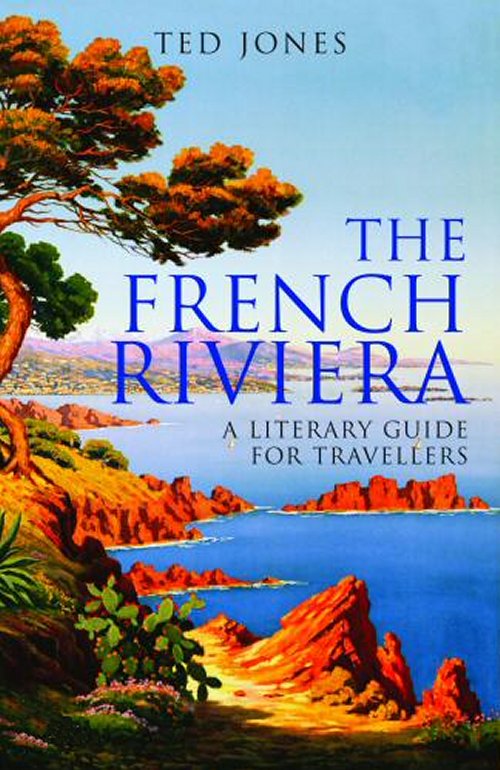
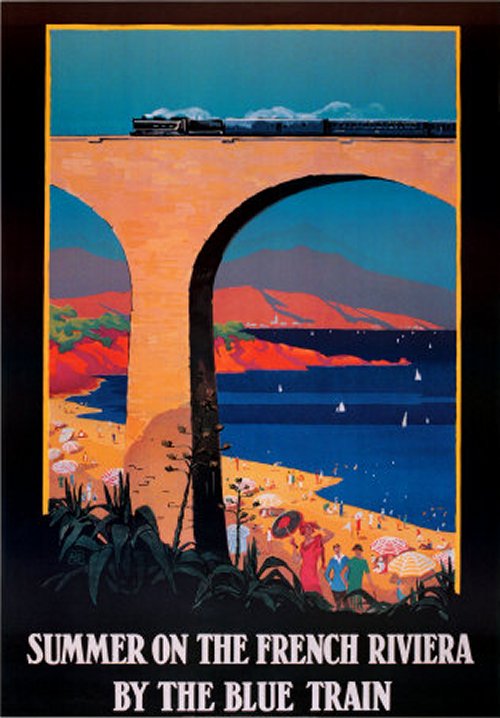 |
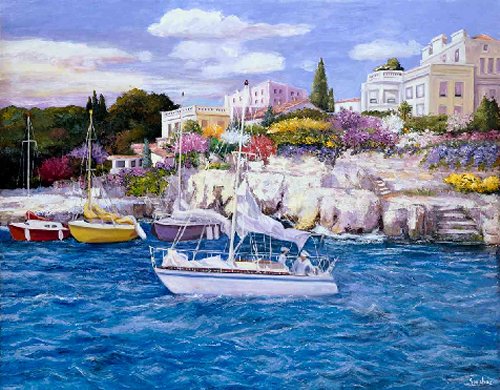 |
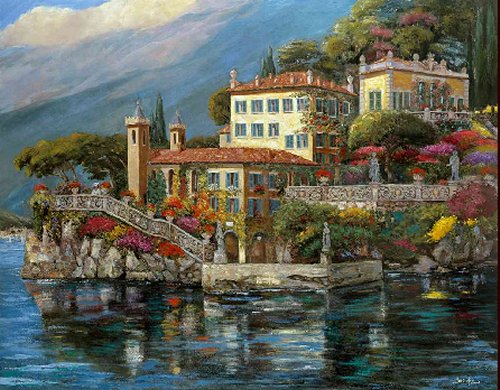 |
FAMOUS PAINTERS OF THE RIVIERA
Not to be
outdone by the writers, famous painters have made their way
to the Riviera. It probably comes as no surprise that
many famous painters were drawn to the Riviera for the same
reasons the writers were - beauty, rest, and good company.
Indeed, the climate and vivid colors of the
Mediterranean attracted many famous artists during the 19th
and 20th centuries, the Golden Era of the
Riviera. Not only did they come
to relax, they came here for inspiration. As you can
see in these paintings, the Riviera is a wonderful place to
immortalize through art. Magnificent villas, colorful
landscapes, majestic mountains, boats and yachts wherever
the eye can see, plus always the amazing dark blue of the
Mediterranean - this wonderful area would inspire anyone to
paint!
Here is an impressive list from Wikipedia of the artists who
frequented the Riviera. Since it is the "French"
Riviera after all, you will see a Hall of Fame list of
famous French artists plus some guy named Picasso.
|
Pierre Bonnard (1867-1947); retired to and died at Le
Cannet.
Georges Braque (1882-1963); painted frequently at
L'Estaque between 1907 and 1910.
Roger Broders (1883-1953); Parisian travel poster
illustrator.
Paul Cézanne (1839-1906); a native of
Aix-en-Provence, Cézanne painted at L'Estaque between 1878
and 1882.
Henri-Edmond Cross (1856-1910); discovered the Côte
d'Azur in 1883, and painted at Monaco and Hyères.
Maurice Denis (1870-1943); painted at St. Tropez and
Bandol.
André Derain (1880-1954); painted at L'Estaque and
Martigues.
Raoul Dufy (1877-1953); whose wife was from Nice,
painted in the region, including in Nice, Marseille and
Martigues.
Albert Marquet (1873-1947); painted at Marseille, St.
Tropez and L'Estaque.
Henri Matisse (1869-1954); first visited St. Tropez
in 1904. In 1917 he settled in Nice, first at the Hôtel Beau
Rivage, then at the Hôtel de la Méditerranée, then at la
Villa des Alliés in Cimiez. In 1921 he lived in an apartment
in Nice, next to the flower market and overlooking the sea,
where he lived until 1938. He then moved to the Hôtel Régina
in the hills of Cimiez, above Nice. During World War II he
lived in Vence, then returned to Cimiez, where he died and
is buried.
Claude Monet (1840-1927); visited Menton, Bordighera,
Juan-les-Pins, Monte Carlo, Nice, Cannes, Beaulieu and
Villefranche, and painted a number of seascapes of Cap
Martin, near Menton, and at Cap d'Antibes.
Edvard Munch (1863-1944); visited and painted in Nice
and Monte Carlo (where he developed a passion for gambling),
and rented a villa at Saint-Jean-Cap-Ferrat in 1891.
Pablo Picasso (1881-1973); spent each summer from
1919 to 1939 on the Côte d'Azur, and moved there permanently
in 1946, first at Vallauris, then at Mougins, where he spent
his last years.
Auguste Renoir (1841-1919); visited Beaulieu, Grasse,
Saint-Raphaël and Cannes, before finally settling in
Cagnes-sur-Mer in 1907, where he bought a farm in the hills
and built a new house and workshop on the grounds. He
continued to paint there until his death in 1919. His house
is now a museum.
Paul Signac (1863-1935); visited St. Tropez in 1892,
and bought a villa, La Hune, at the foot of citadel in 1897.
It was at his villa that his friend, Henri Matisse, painted
his famous Luxe, Calme et Volupté in 1904. Signac made
numerous paintings along the coast.
|
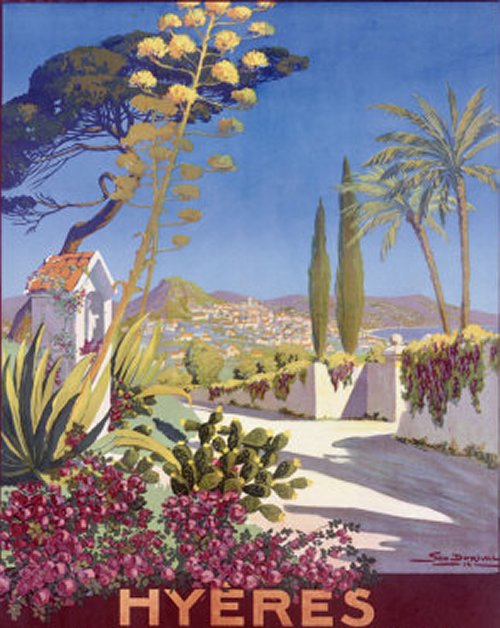 |
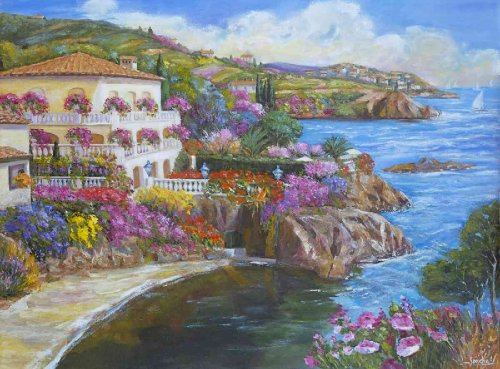 |
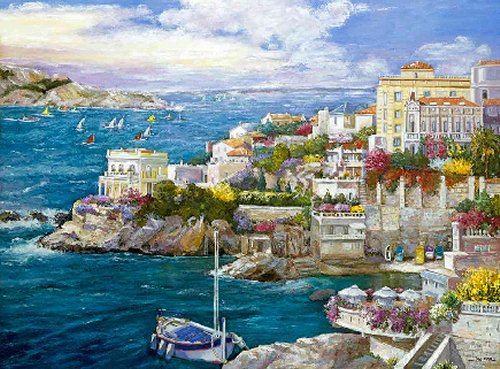 |
THE FRENCH RIVIERA -
YACHT PARADISE!
|
The Mediterranean Sea is the most popular
yachting destination on earth. Since the Mediterranean is
almost completely enclosed by land, the waters are supremely
tame. In addition, the warm climate offers little
threat in the way of major storms such as hurricanes.
The French Riviera is considered the crown jewel of "The
Med" with its stunning scenery, gorgeous coastlines, and
charming ports. For the adventuresome, a yacht can
offer the chance to find a secluded beach to spend the day
or the chance to float over to Saint Tropez for its wild
night-life.
The French Riviera is home to the greatest concentration of
yachts in the world. Using Google Earth, I counted 40
separate yacht marinas along the French Riviera. Every
one of those marinas had 20 or more yachts.
Considering the Riviera is only about 80 miles long, that
means there is one yacht marina for every two miles.
For example, the marina pictured on the right is located in
Cannes. I estimate there are 250 boats docked in
there. As you see, they are neatly sorted for size.
What you can't see is that there is another marina in Cannes
about a mile away. The other marina only holds about
200 yachts, mostly because they are all bigger! In
addition, believe it or not, there are two smaller marinas
in Cannes as well.
There are so many yachts in the waters around the Riviera
that you start to think of Seinfeld - yachta yachta yachta.
They are EVERYWHERE. I bet there are so many yachts
that they have rush hour traffic at 5 pm just like freeways
to get back into the marinas and prepare for exciting
evening activities.
Some yachts are so big they don't even bother docking.
They just stay anchored out in the bay. These yachts
are so large they hold baby yachts inside that can be
brought out and used to tender the guests into Monaco or
Cannes. You have no idea how big some of the ships
are. The current largest yacht in the world is the
length of two football fields! Mind you, the
largest cruise ships in the world are about 1,200 feet at
the moment, so these mega-yachts are literally half the size
of cruise ships. Imagine having half a cruise ship all
to yourself.
The underlying theme of the French Riviera is LUXURY and
lots of it.
Deluxe casinos, glitzy night life, million
dollar villas, exquisite swimming pools, stunning women (and
men), the finest restaurants, glamour, sophistication, expensive cars and
world-famous celebrities are all part of the magnificent
picture.
However this picture is incomplete; it is
missing one more piece of the puzzle - a yacht to die for,
the ultimate status symbol.
So what does a
yacht like this cost? The cliché, of course, is that
if you have to ask, then you can't afford it.
A yacht is
ultimately just a toy. But what a toy! It
symbolizes everything - wealth, freedom, arrogance, power,
glamour, leisure, and sex. Yum.
I don't know about the rest of you, but having a yacht sure
looks like fun to me. In my dreams, of course.
These pictures make me about as envious as I can possibly be!
The well-known philosopher Bertrand Russell said envy
was one of the most potent causes of unhappiness. "It
is a universal and most unfortunate aspect of human nature
because not only is the envious person rendered unhappy by
his envy, but also wishes to inflict misfortune on others."
Although Russell said that envy is generally seen as something negative,
he also believed that envy was a driving force behind the
movement towards democracy and must be endured in order to
achieve a more just social system.
I just remind myself that money isn't everything,
materialism is a waste of time and that rich people are
certain to be very miserable. I repeat that to myself
constantly.
|
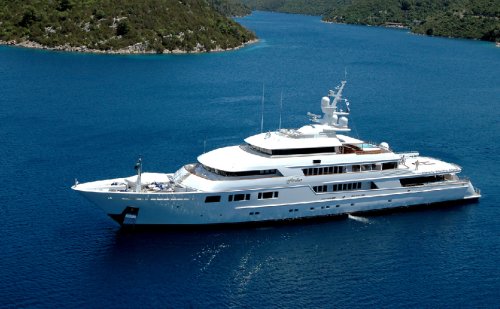
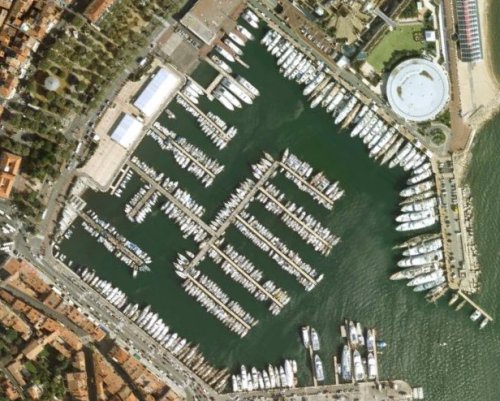
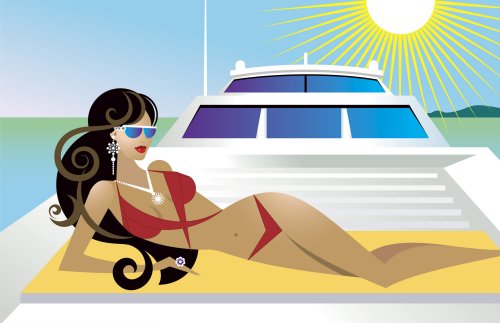 |
According to
affluentusa.com,
the
term ‘Luxury Yacht’ refers to a very expensive
privately-owned yacht which is professionally crewed. There
has been a big change in the long history of luxury yachts
and these have been transformed from something simple and
classy to a high-tech rich asset.
Also known as a super-yacht, a luxury yacht may be either a
sailing or motor yacht. This term began to appear at the
beginning of the 20th century when wealthy individuals
constructed large private yachts for personal pleasure.
Early luxury sailing yachts include Americas Cup classic J
class racers like S/Y (sailing yacht) Endeavour and Sir
Thomas Lipton’s S/Y Shamrock. The New York Yacht Club hosted
many early luxury sailing yacht events at Newport, Rhode
Island, during the Gilded Age.
More recently, over the last decade or two, there has been
an increase in the number and popularity of large private
luxury yachts. Luxury yachts are particularly bountiful in
the Mediterranean and Caribbean Seas, although increasingly
luxury yachts are cruising in more remote areas of the
world. With the increase in demand for luxury yachts there
has been an increase custom boat building companies and
yacht charter brokers.
Some yachts are used exclusively by their private owners,
others are operated all year round as charter businesses,
and a large number are privately owned but available for
charter part time. Weekly charter fees range from a few tens
of thousands of dollars a week to nearly a million dollars a
week. This covers the wages of the crew, but not fuel, food
and drink, or other incidental expenses.
Yachts from 23 meters (75 feet) and up qualify for design
awards from the Superyacht Society, but at the bottom end of
that scale yachts will not necessarily be crewed and many
set the minimum length for a superyacht considerably higher.
From around 30 meters (98 feet) and up yachts are always
crewed. A 45 to 50 meters (148 to 164 feet) yacht, the
smallest with a generally accepted claim to superyacht
status, will usually be a three decker with cabins for 12
guests (that is a preferred number, more common than either
10 or 14, and is found on yachts across quite a wide size
range), and for a crew of a similar size. A 50 meter yacht
has one or two tenders for reaching shore and other “toys”
which may include a speed boat or sailing boat, jet-skis,
windsurfing and diving equipment and a banana. Up to date
yachts have multiple flat screen televisions and satellite
communications.
The number of really large yachts has increased rapidly
since the 1990s and increasingly only yachts above around 65
meters (213 feet) stand out among other luxury yachts.
Yachts of this size are almost always built to individual
commissions and cost tens of millions of dollars (most
super-yachts cost far more than their owners’ homes on land,
even though those homes are likely to be among the largest
and most desirable). A yacht of this size usually has four
decks above the water line and one or two below. It is
likely to have a helicopter landing platform.
Apart from additional guest cabins, which are likely to
include one of more “VIP suites” besides the owner’s suite,
extra facilities compared to a 50 meter yacht will include
some or all of indoor jacuzzi, sauna and steam rooms, a
beauty salon, massage and other treatment rooms, a medical
centre, a discotheque, a cinema with a film library, plunge
pool (possibly with a wave-maker), a playroom, and
additional living areas such as a separate bar, secondary
dining room, private sitting rooms or a library. There will
be more boats and “toys” than there are on a 50 meter yacht.
It’s only something to wonder - how yachts of the future
would be and what directions would they take in terms of
their design, purpose and to what different aspects of our
lives would they touch.
|
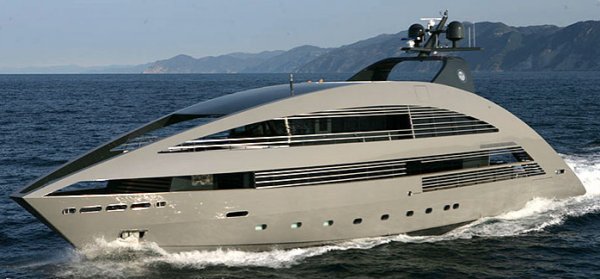
This yacht can be found at
yachtplus.com.
I hope they don't mind letting us use
these pictures of their magnificent yacht to whet our thirst and
imagination.
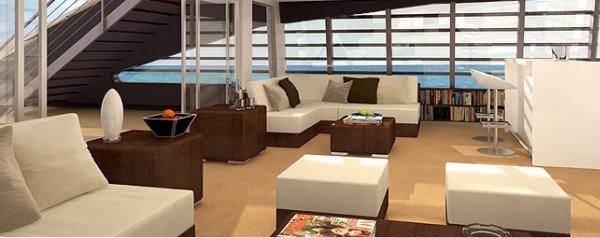
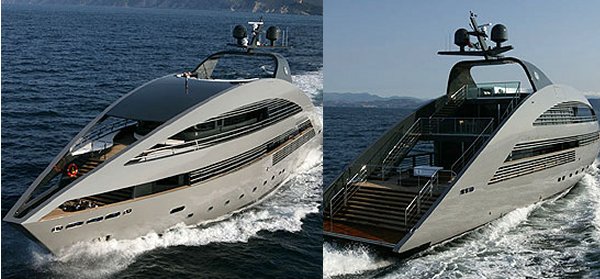
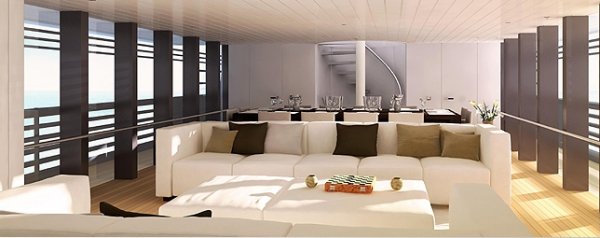 |
|
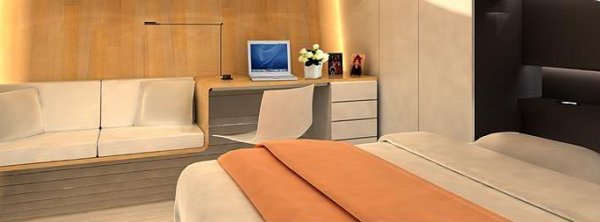 |
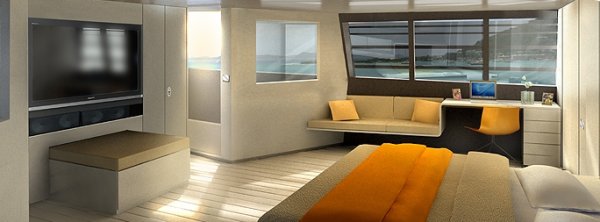 |
|
PAUL ALLEN'S MEGA
YACHT - THE OCTOPUS docked in MONACO |
|
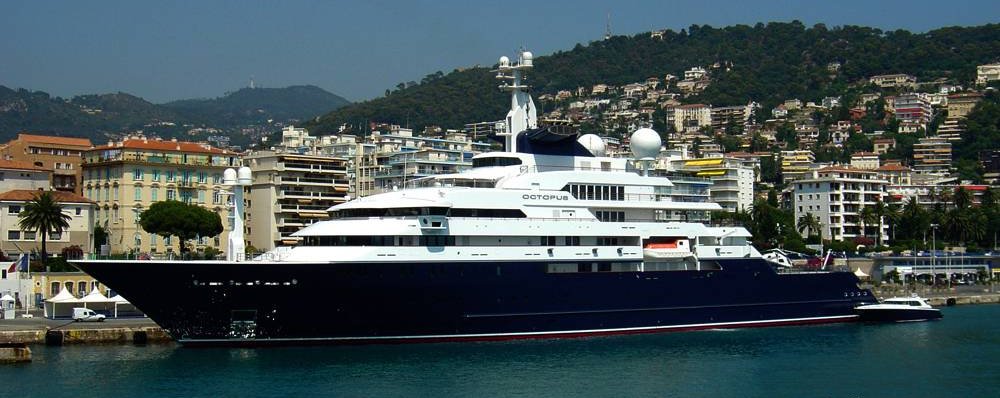 |
The harbor at
Monaco is always lined with mega
yachts
such as the famous Octopus (pictured above), a
fixture on the Riviera. So it is surprisingly
to realize this famous harbor is
relatively small compared to other Riviera marinas.
The foothills of the Alpes Maritimes just tower over
Monaco. The harbor is lined with instantly recognizable
landmarks: on the one side, the Hotel L'Hermitage; on the
other, the Royal Palace and beautiful old town, not to
mention the world-famous
Casino Royale. For raw, unadulterated glamor, this
is the place to be.
Paul Allen was the co-founder of
Microsoft along with his buddy Bill Gates. He is
considered one of the top ten wealthiest men in the world.
In 2003, the launch of Allen's 416
ft Octopus secured its position
as the world's largest yacht.
Today, just six years later, the Octopus has fallen to
eighth among the world's super-yachts. The current
largest ship, the Eclipse, is 525 feet long. They just
keep getting bigger.
The Octopus cost
Allen over $200 million.
It has a permanent crew of
60, including several former Navy Seals.
The Octopus has two
helicopters, seven boats, a 10 man submarine and a remote
controlled vehicle for crawling on the Ocean floor. The
submarine has the capacity to sleep eight for up to two
weeks underwater.
On average, owners must spend a minimum of 10 percent of the
purchase price every year to keep these yachts in good
working condition and cover crew salaries. Therefore
The Octopus requires
a $20 million annual budget
|
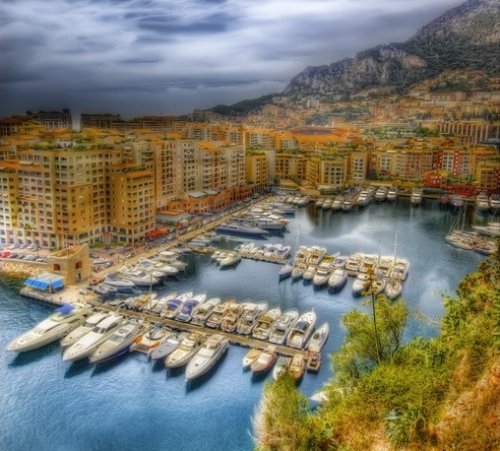 |
PORT GRIMAUD - THE
INCREDIBLE YACHT PLEASURE CITY
|
As far as I am
concerned, Google Earth is one of the most
amazing features on the Internet. Google Earth
literally allows you to visit any place on earth and get a
pretty good close-up look. You can see your own roof
top or go visit the top of the Mount Everest. It is a
wonderful way to visit any location you are curious about.
For this article, I have scrolled up and down the Riviera
looking at everything there is to see from harbors to
beaches to islands and mountains. One place in
particular made me stop in my tracks.
"What the heck is this place?" I wondered.
Fortunately, Google Earth has captions as well. The
captions allowed me to identify this amazing boat community
as Port Grimaud near Saint Tropez.
Here
is a brief write-up on Port Grimaud:
At the head of
the Gulf of St-Tropez, just north of La Foux on the main
coast road, the ultimate Côte d'Azur property development
half stands and half floats. Port Grimaud was created in the
1960s as a private lagoon pleasure city complete with
waterways for roads and yachts parked at the bottom of every
garden.
Port Grimaud was designed in 1966 by the French architect
Francois Spoerry. It was the dream of a man who was
both an architect and a sailor as well. It was always
his ambition to have his own boat just in front of the
house. As he let his imagination wander, he conceived
of a Venice-style community where everyone would have access
to visit the Mediterranean Sea in a matter of minutes.
So is this place a city or a mooring marina? Actually
it was designed as both. The quays are lined with gardens
and boats are moored against the houses. Built in a Venetian
style, the mainly traffic-free town is popular with boat
owners as most properties come with their own berth.
All the houses are built in exquisitely tasteful old
Provençal style. Many come equipped with their own
private pool. The owners, Joan Collins for example,
are more than just a little well-heeled. It's surprising
that the whole enclave isn't wired off and patrolled by
fiercesome dogs, but then most tourists don't come equipped
with boats to snoop around with.
The main visitors' entrance is 800m up the well-signed road
off the N98. You don't have to pay to get in, but you can't
explore all the islands without hiring a boat or joining a
crowded boat tour (around €4). Even access to the church
tower for views is controlled by an automatic paying barrier
(€1).
However, if you want to eat and drink, there are rows upon
rows of brasseries, restaurants and cafés, clearly designed
for the visiting public rather than the residents, and not
particularly good value (though affordable enough).
This entire area was originally shallow marsh land.
The secret was to create artificial canals. As the
canals were dug out, the excavated dirt was then used to
create the islands.
Little by little, 2000 homes were built, none of them
looking like the other; every paint color, balcony and
shutter was registered in order to find the original color
in case of restoration.
|
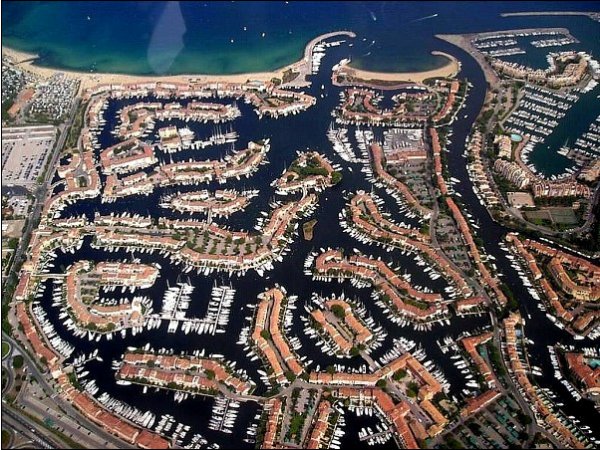
Do you see the little island in the middle? Look below for
a close-up thanks to
Google Earth. Do you see the bridge? Is this place
cool or what!
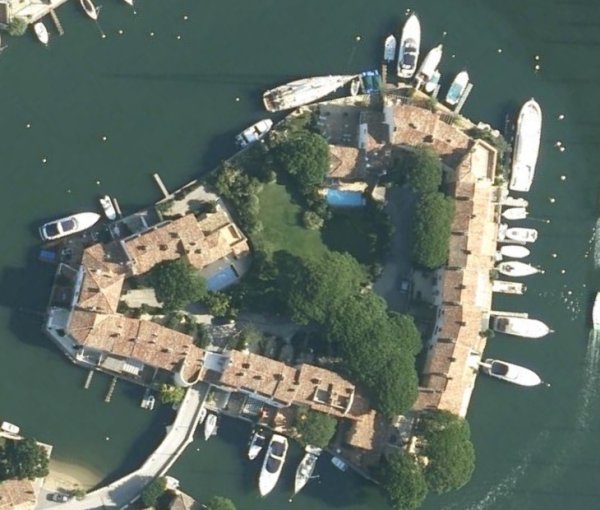 |
|